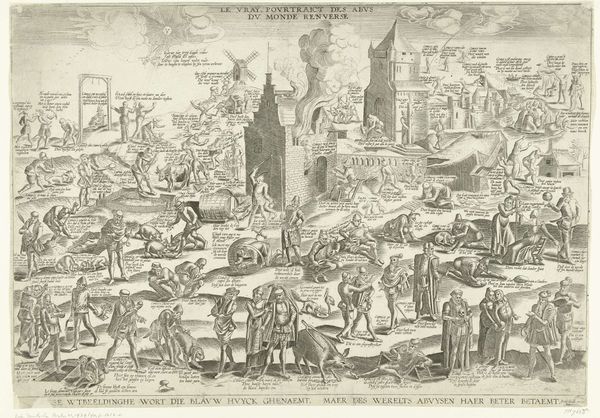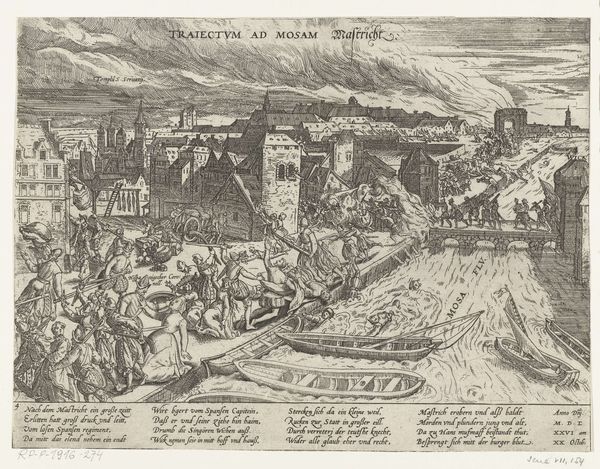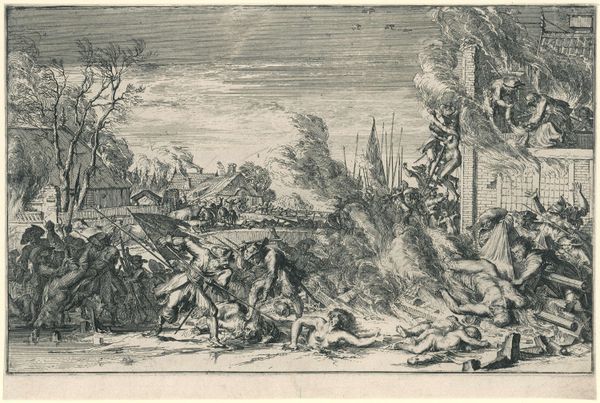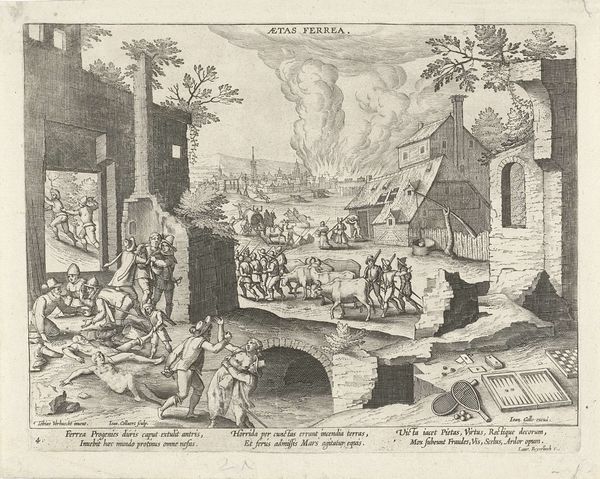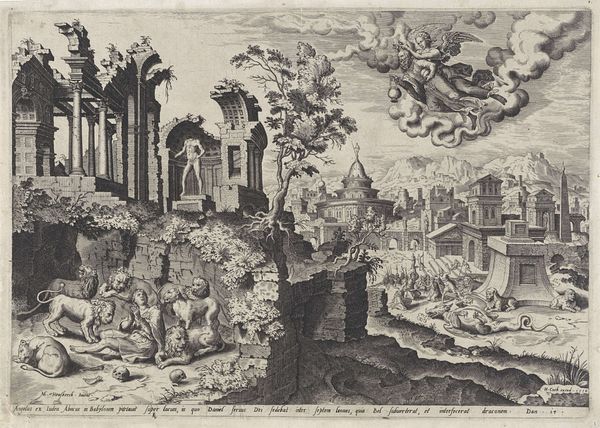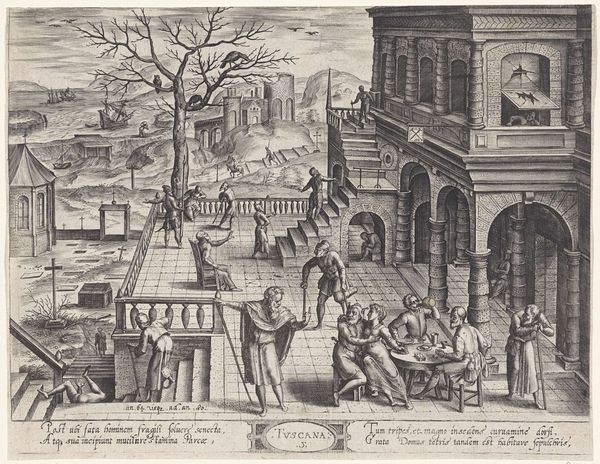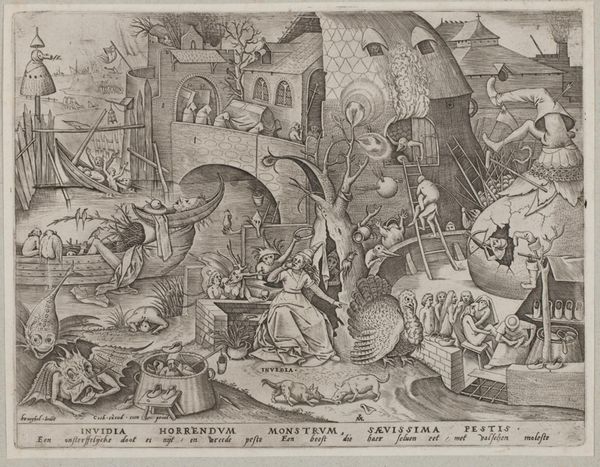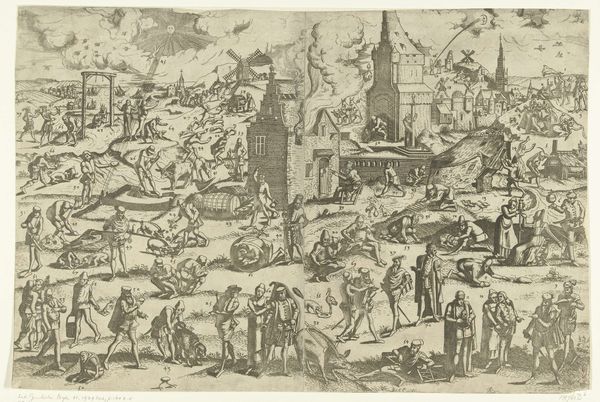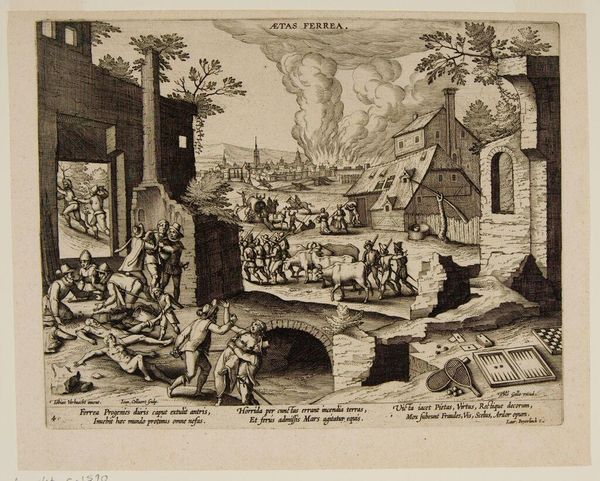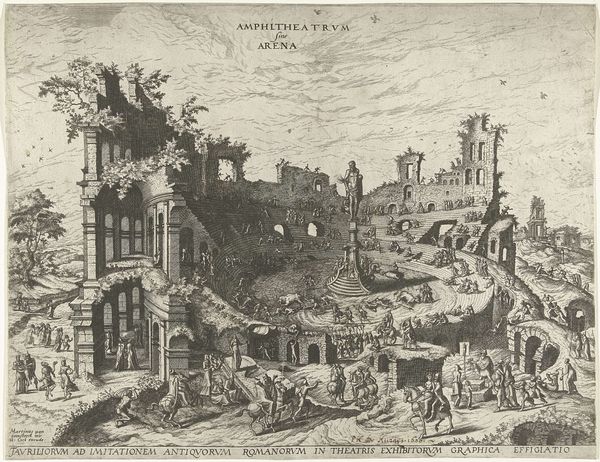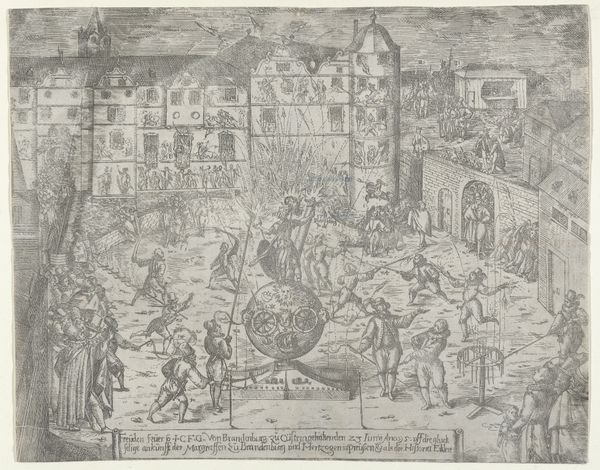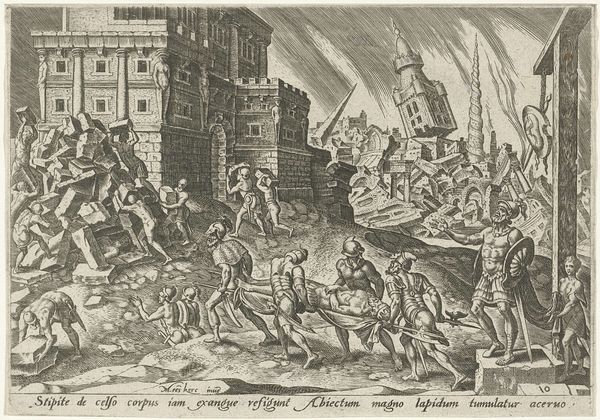
print, intaglio, engraving
#
ink drawing
#
allegory
#
pen drawing
# print
#
intaglio
#
landscape
#
mannerism
#
figuration
#
form
#
vanitas
#
line
#
history-painting
#
engraving
Dimensions: height 209 mm, width 272 mm
Copyright: Rijks Museum: Open Domain
Curator: Let's discuss this rather arresting print: "Van 80-jarige leeftijd tot de dood: de ruïne," created around 1577 by Wierix. You immediately get a sense of... well, desolation, wouldn't you agree? Editor: Absolutely, a stark warning, really. It's a veritable catalog of decline and destruction. The composition is deliberately unsettling. Everything seems to be collapsing inwards. What can you tell me about Wierix's methods? Curator: Wierix, masterful engraver that he was, likely used a combination of burins and drypoint needles to achieve this incredible detail. Notice how he uses line quality, from delicate to bold, to describe various textures - stone, flesh, and swirling smoke. These engravings would be reproduced and disseminated widely; consider their consumption, how many hands might this image have passed through? Editor: Exactly. And it circulated during a time of immense religious and political upheaval. It's more than just personal mortality; I see in it a commentary on societal decay, perhaps even anxieties about the political structures of the time and gender roles. That wheel in the lower corner strikes me as very much symbolic of societal labor. Curator: Interesting point. Given the period, Wierix, like many artists, would have been influenced by humanist thought, the Reformation, and also by shifting economic conditions of the burgeoning merchant classes of the Netherlands. Prints were a burgeoning market. Wierix had a means to represent a changing cultural landscape that would reach an ever wider audience than previously possible. Editor: Yes, the placement of Death in relation to that sleeping figure emphasizes themes of not just aging but of unequal distributions of power, where laborers are exploited even as they are headed to the grave. Death leans over the labor as a master rather than as some egalitarian force. What of the specific allegorical elements and the ruined architecture? Curator: Clearly referencing classical motifs of transience. We see not only physical decay, suggested by a skeleton and crumbling stone, but intellectual and spiritual, if the winged figure with the hourglass overhead is meant to represent a soul. These images act to shape collective understandings of identity and belonging in an environment experiencing both rapid urbanization and industrial growth. Editor: It’s this complex intersection that gives the print its enduring power. Beyond skillful line work, this print reminds me how linked systems of oppression and extraction permeate lived realities in both visible and invisible ways. We see in the material ruins metaphors for more expansive forces. Curator: An important lens through which to consider this work. I leave seeing it differently now, with added clarity. Editor: Precisely. It makes you consider all that might yet crumble or be destroyed, on the scale of the individual and that of entire civilizations.
Comments
No comments
Be the first to comment and join the conversation on the ultimate creative platform.
